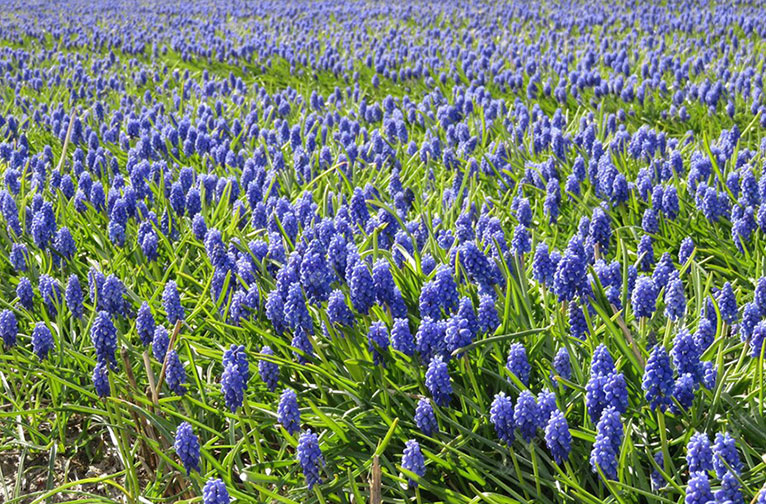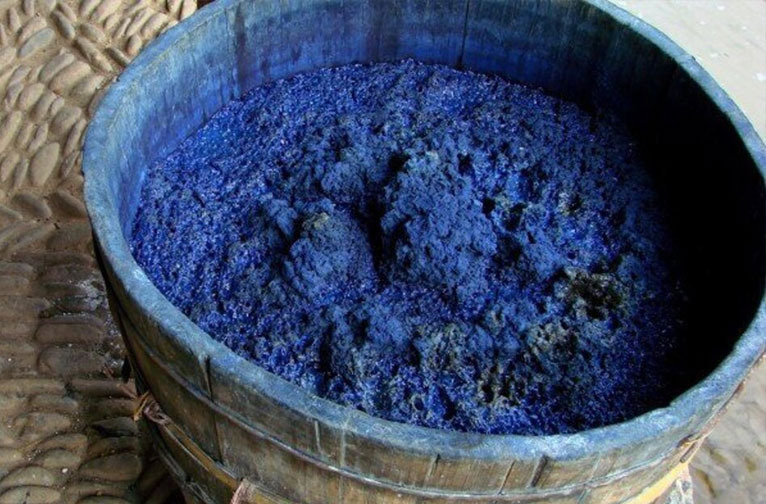Imbued with tales of mystery, healing, spirituality, intrigue, rivalry, theft, greed, conflict, oppression, and political resistance, the story of indigo has been scripted from way back— in the times of the earliest form of civilization documented in real-time in India.
Yes, we are talking about the Indus Valley Civilisation, also known as the Harappan Civilization, which flourished approximately between 3300 BCE to 1300 BCE. At the heart of this historical and cultural richness is the necklace of sophisticated cities that crowded the banks of the great Indus or Sindhu River, which finds its source in the mighty Himalayas.
The British East India Company laid its covetous eyes on the Indus region from as far back as the 17th century. Sir Thomas Roe, England’s first ambassador to India writing back home in 1615 to the Company brought its notice to the amazing cloth being woven here by the people of the region. The Portuguese, the nemesis of the British traders, already had a strong foothold in the fertile silt-rich Indus Delta and were determined to keep them out, even if it meant burning the port at Thatta to do so.
With the English finally managing to gain favour with the Mughal court in 1653, and having kicked the Portuguese to the kerb, they were more than ready to give hard silver in return for Sindhian cloth.
A hot sun, plenty of water, and a vigilant eye were needed to nourish indigofera tinctoria or indigo plants, which gifted the farmers nila or the colour blue with which one could dye the cloth for which Sindh was renowned for. And to meet these idyllic conditions cultivated fields of indigo lay scattered across the river valley. It was not just the dyers of cloth who loved the indigo dye, it also caught the attention of artisans and alchemists. It was also used to make greens, purples, and blacks. Amongst the important finds recovered by archaeologists from the Mohenjo-Daro site, were seeds of the indigo plant, as well as scraps of cloth dyed in indigo blue.
Colonial Conundrum
Considered the rarest among rare colours, blue can only be sourced naturally from the indigo plant. It is the world’s oldest and most widely used natural dye.
As the British stepped up their commerce and colonization agenda in India one of the most alluring commodities up for trade was indigo. With the rise in global demand for this prized ‘blue gold’ they introduced indigo plantation in Bengal in 1777. The combined supply of indigo of Bihar and Bengal, by 1850, was taking care of 80 percent of the world’s indigo demand. The Agra region’s indigo plantation tracts included the towns of Biana, Khurja, Aligarh, and Hindaun. Biana indigo or 'Agra Indigo', as it was also known, was said to produce the best quality, highly profitable textile dye for the European market. The Sarkhej variety of indigo was also held in high regard.


The components considered for preparing the finest indigo -- 'pure grain, a violent color, its gloss in the sun, and that it be dry and light so that swimming in the water or burning in the fire, it cast forth a pure light violet vapor leaving a few ashes', as ascertained by William Finch an agent with an expedition sent under William Hawkins in 1608 by the East India Company during the reign of the Mughal emperor Jehangir.
The highly lucrative indigo trade sent the legendary rivalry between the British East India Company and The Dutch East India Company into an even bigger tizzy.
Over time indigo came to be cultivated in many parts of India including the eastern coast of Peninsular India, the great Northern Plain, and the Deccan region.
Indigo has played a pivotal role in India’s printed, woven, and tie-dyed textile traditions.
The journey from leaf to cloth
After their harvesting the leaves of the bushy indigo plant are soaked in vats and weighed down by wooden logs and left to ferment overnight. With the breaking of the dawn, the leaves are removed. Transferred to another vat, within three hours at the most, the greenish water gets oxidized by being exposed to air by vigorous churning— resulting in a magical transformation as it greedily sucks up the blue pigment released by the leaves. The result is Indican, a water-soluble blue-hued solution. The blue-coloured sludge left at the bottom of the vat is skimmed, strained, pressed, sun-dried and shaped into cakes.
The spent leaves are then sent off for composting, being a wonderful nitrogen fixer for the soil, and the residue water is used for irrigation— so there’s Zero waste in this sustainable process.
The story doesn’t end here. It's only when Indican is oxidized that it becomes Indigotin (the dye component of indigo powder) — which is the true dye pigment. Indigotin is insoluble in water; a special dyeing technique is what helps to bind it to the cloth. The extract is available in the form of lumps or chips (which need to be ground before use) or as a fine powder as used in hair dyes. Indigo is also available in leaf form; after the leaves are harvested, they are dried and ground into a powder.
It may surprise you to learn that 200kg of leaves yields only a kilo of indigo. This alone indicates what a labour-intensive and expensive process it is to attain the dye. Little wonder then that there was a growing trend to go for the more easily accessible synthetic dye, developed in the late 19th century by a German chemist, to ensure faster and more profitable returns from the textile exports for the English traders!
The decline in the cultivation of natural indigo has also been driven by the farmer’s need to opt for more lucrative and easily grown cash crops. Seasonal constraints are a big headache for cultivating indigo. Farming of indigo is seriously limited as it favours well-defined rainy and dry seasons, which is what you would get in tropical regions.
India, like many other countries that came to adapt indigo to their textile traditions, has created distinctive textiles based on indigo blue. Block printers from Rajasthan and Gujarat’s Kutch region, hailing from the Khatri weaving community of Sindh, have connected with indigo to maximum effect- think iconic prints like ajrakh, dabu, ikat etc.
A natural hue to ‘dye’ for
All natural fibres can readily embrace indigo in all its beautiful hues…from the palest of blues to deep, vibrant shades of purplish black, to blue-black. The colours vary according to the number of times it is dipped, the kind of vat being used and the concentration of the indigo.
Since Indigotin isn’t soluble in water it needs to be reduced to a water-soluble form to be used as a dye. For that to happen, the processing vat needs three essential components — the indigo itself, along with a reducing agent (such as sugars, some natural dyes, or other plants) and a base (which is an alkaline solution calx (calcium hydroxide) known as lime/ pickling lime/hydrated lime. Soda ash or lye are alternatives to calx.
What the reducing agent does is it lower the oxidation state of the indigo molecule, transforming indigotin into leuco-indigo — which allows it to become soluble in water at room temperature.
Were you aware that natural indigo has anything between 15% to 55% indigotin by weight, based on the crop, the growing season, and the harvest?
Before dyeing the cloth, it is essential that proper scouring be done for good dyeing. This makes all the difference to the penetration level of the dye.
Being superior in quality, long-lasting and stronger in colour indigo sourced from India set the courts of Europe ablaze in their pursuit of the ‘royal blue’ which was worth a king’s ransom— that’s before the advent of synthetic version created by German chemist Adolf von Baeyer in 1865, which led to the collapse of the natural indigo market in India.
India’s shining textile traditions, ranging from dabu to ajrakh, Sanganeri to Bagru, Bandhni to the novel Shibori are now pivotal in the revival of natural indigo dyes. Helmed by the new crop of sustainability-driven textile designers the country is witnessing the great appeal of natural indigo dye.